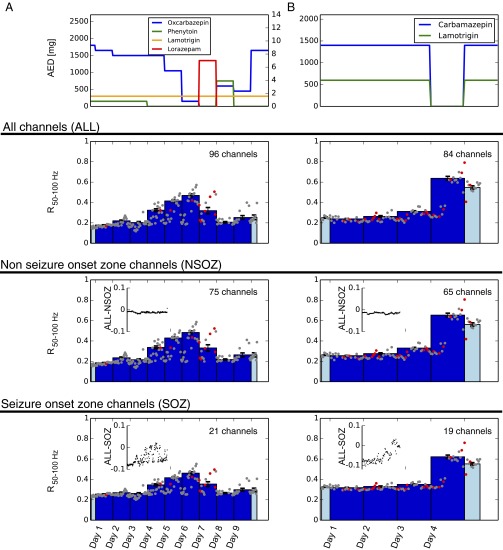Fig. S3.
Covariation of synchrony R with AED load is independent whether R is measured within the seizure onset zone or outside the seizure onset zone. (A and B) The two columns show results from two representative patients. Level of medication (AED) is plotted on top. Mean synchronization R was calculated from all channels (second row, ALL), from channels outside of the seizure onset zone only (third row, NSOZ), and from channels within the seizure onset zone only (fourth row, SOZ). As channels of the seizure onset zone (SOZ) we considered those channels that had been defined by an experienced epileptologist as channels from which at least one seizure had originated. Consequently, non-seizure-onset zone channels (NSOZ) were defined as the complement of SOZ (i.e., all channels except those that had been defined as the origin of at least one seizure). In patient A, this classification resulted in 21 of the 96 to be considered as part of the seizure onset zone (SOZ) and, consequently, the remaining 75 channels to be considered NSOZ. In patient B, 19 channels were defined as SOZ, the remaining 65 as NSOZ. The time course of R50–100 showed a similar behavior independent whether all (ALL, second row), channels outside the seizure onset zone (NSOZ, third row) or channels within the seizure onset zone (SOZ, fourth row) were considered in the analysis. In fact, hourly values look very similar but are not exactly the same, as can be seen more easily from the difference plots comparing NSOZ and SOZ to all channels (Insets).

